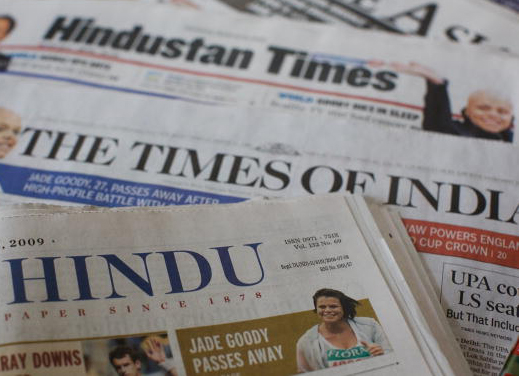
India-Thailand Free Trade agreement talks move ahead
Thailand has indicated softening of stance on some of the issues in the freetrade agreement it is negotiating with India, bringing the pact closer to reality after more than 10 years of talks. Top officials in the ministry of commerce and industry said Bangkok has shown more flexibility recently over some of the demands raised by Delhi, including granting more access to Indian professionals. In 2012-13, India exported $3.7 billion worth of goods to Thailand against imports worth $5.1 billion. India has been demanding greater access under Mode 4 of trade in services, which is related to the movement of professionals. In Thailand, a large number of services like engineering, accounting, legal and architecture are reserved for Thai nationals. For other professionals, Thailand has a restrictive visa policy. India has also been pushing Thailand to sign the mutual recognition agreement, which will do away with the need for Indian professionals to secure additional qualifications from Thailand before being allowed to work there under Mode 4 movements. Thailand also requires medical professionals to secure a licence from the Thai Medical Council, which conducts its examination in Thai, making it difficult for foreign practitioners to clear the exam. Thailand, on the other hand, has been asking for freer movement of Thai spa workers, but India is hesitant as it might lead to an influx of semi-skilled workforce into the country. India and Thailand had signed an early harvest agreement in 2004 to set the ground for the proposed FTA. The 2004 pact led to near-zero customs duty on 82 items of trade between the two nations.
(Source: Economic Times)
Gold imports fall 95% in August, ease CAD woes
India's gold imports crashed 95% in August to just 2.5 tonne from month before, easing pressure on policymakers as they struggle to contain the depreciation of the Indian rupee to the US dollar while addressing an elevated current account deficit (CAD). Bullion industry executives said gold purchases from abroad tumbled last month as lack of clarity on recent central bank guidelines on imports, coupled with an absence of festivals, curbed demand from jewellers in the world’s top consumer. Gold imports last month slumped from 47.5 tonne in July, 31.5 tonne in June, 162 tonne in May and 142.50 tonne in April, according to official data.The government aims to reduce the CAD from $88 billion, or 4.8% of the gross domestic product (GDP), last fiscal to $70 billion, or 3.7% of the GDP, in 2013-14, and is desperately attempting to curb non-essential imports, including those of gold, to achieve the target. Compounding the government’s worry, the rupee has depreciated by more than 20% so far this fiscal. Gold imports stopped after July 22 due to confusion over a rule issued by the Reserve Bank of India, which required importers to re-export at least 20% of all the purchases from overseas, and jewellers started using stocks that had piled up in April and May following record imports of 304.5 tonne. Although the RBI rule was aimed at curbing the flow of gold into the country and not to stop it, the importing agencies took time to get a grasp on the many operational procedures involved, including the undertaking that needs to be submitted to the customs department once the goods are delivered to an exporter for the next lot of imports. Imports may again rise to around 30 tonne in September, as jewellers usually start building inventory to cater to the requirement during the festival and marriage season from October.
(Source: Financial Express)
Will India pledge gold to secure IMF loan?
Speculation on India pledging gold with the International Monetary Fund (IMF) to secure a loan to prop up the depreciating rupee have reached the headquarters of the multilateral institution in Washington. At a press briefing on Friday, IMF Communications Department Director Gerry Rice said there was a lot of speculation about India coming to the IMF, possibly to sell its gold reserves to boost its currency. India had taken loans from the IMF thrice — on November 9 1981, January 18 1991 and October 13 1991 to the tune of $3.9-billion special drawing rights (SDRs), $551.93-million SDRs and $1,656-million SDRs, respectively. In January 1991, India’s foreign exchange reserves had depleted to $1.2 billion. By June that year, these reserves, too, had dried up. These reserves could finance only three weeks of essential imports. India had to pledge 67 tonnes of gold reserves to secure the IMF loan. Rice said India faced a number of weaknesses aggravated by the squeeze in global liquidity. However, the current situation presented both challenges and opportunities for India to continue its policy efforts on a variety of fronts.
(Source: Business Standard)
Employment generation slows in Q1 as growth falls to 4-year low
Textiles, leather, metals, automobiles, gems and jewellery, transport, information technology/business process outsourcing (IT/BPO) and handloom-powerloom generated just 86,000 net additional jobs in April-June against 107,000 in the earlier quarter and 168,000 in the third quarter of FY13. Employment rose 106,000 in the direct category of workers, while it dipped 20,000 for contract workers in the first quarter of FY14 over the fourth quarter of FY13. A ban on iron-ore mining dampened the chances of job creation in metals. Transport saw loss of jobs for 200 in the first quarter against 3,000 the previous. Automobiles has been seeing a slump, visible in employment generation. Gems and jewellery saw tight conditions after import duty was raised to eight per cent in June against six per cent earlier. In August, it was raised to 10 per cent. IT/BPO could create 300 additional jobs despite it doing well after the US started recovering. This was largely due to the sector going capital-intensive, said an analyst. Economic growth had fallen to a four-year low of 4.4 per cent in the first quarter of FY14.
(Source: Business Standard)
Economic Section
Royal Thai Embassy















